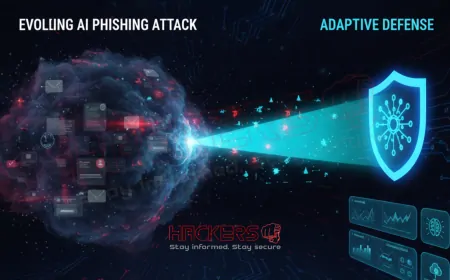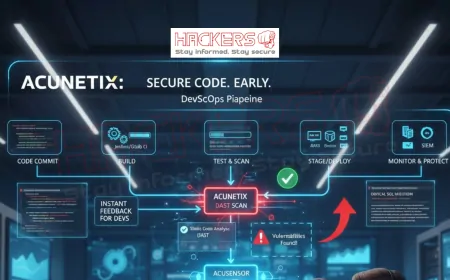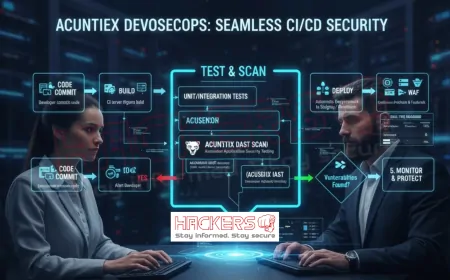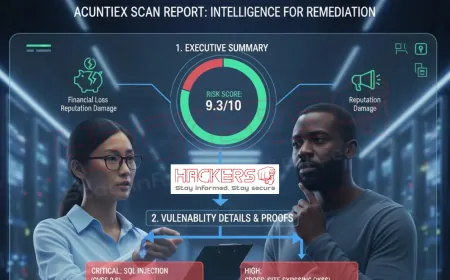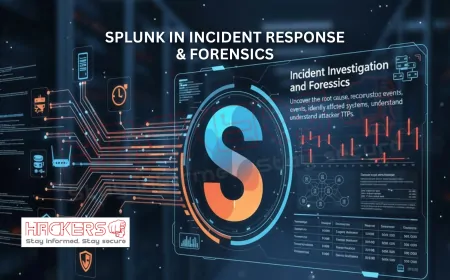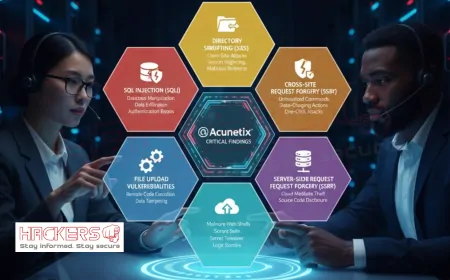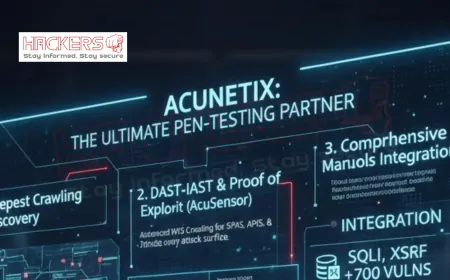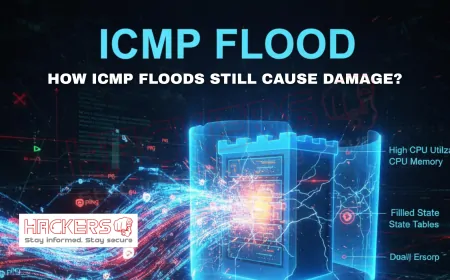What Is Splunk Enterprise Security (ES) and Why It Matters?
Imagine walking into a busy airport control tower. Screens flash with flight paths, weather alerts, and passenger data. One wrong move could delay hundreds of flights. Now picture a Security Operations Center (SOC). Instead of planes, analysts track login attempts, malware, and data leaks. One missed alert could cost millions. In both places, the difference between chaos and control is a unified view of the data. For SOC teams, that unified view comes from Splunk Enterprise Security, or ES. Splunk ES is not just another tool. It is the brain of a modern security program. It takes raw logs from firewalls, servers, cloud apps, and endpoints, then turns them into clear, actionable intelligence. It detects threats faster, automates responses, and helps teams prove compliance. Whether you are a small startup or a global enterprise, Splunk ES changes how you defend your organization. This guide explains what Splunk ES is, how it works, and why it has become essential for security teams worldwide. Even if you are new to Splunk, you will understand why ES matters and how to get started.
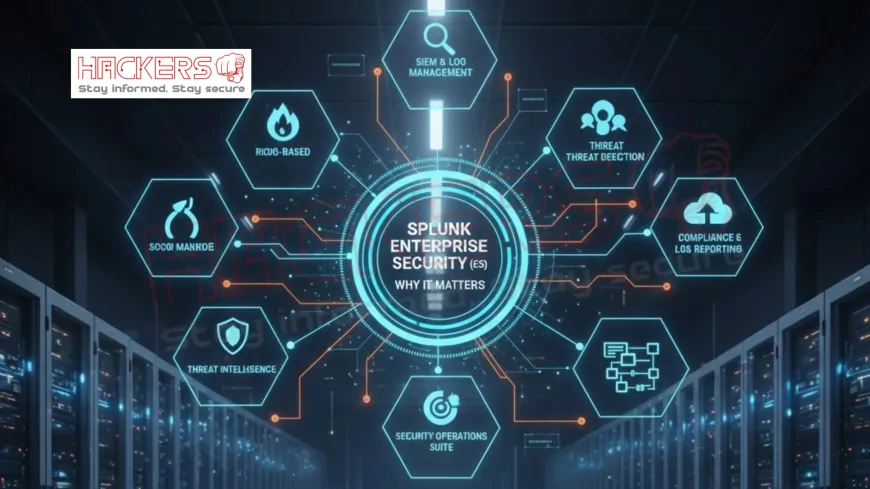
Table of Contents
- What Is Splunk Enterprise Security?
- Core Components of Splunk ES
- Why Splunk ES Matters for Modern Security
- Key Features That Set ES Apart
- How Splunk ES Works: A Simple Workflow
- Splunk ES vs. Core Splunk: Feature Comparison
- Real-World Use Cases
- Getting Started with Splunk ES
- Conclusion
What Is Splunk Enterprise Security?
Splunk Enterprise Security (ES) is a premium security app built on top of Splunk Enterprise or Splunk Cloud. Think of core Splunk as a powerful search engine for machine data. ES adds security-specific intelligence on top.
It is designed for Security Operations Centers (SOCs), incident response teams, and compliance managers. ES ingests logs from hundreds of sources, then correlates, prioritizes, and visualizes threats in real time.
At its heart, ES follows the MITRE ATT&CK framework, a global standard for understanding attacker tactics. It maps every alert to a specific stage of an attack, from initial access to data exfiltration.
Core Components of Splunk ES
Splunk ES is made up of several interconnected parts that work together:
- Correlation Searches: Pre-built or custom rules that look for patterns across multiple data sources. Example: 10 failed logins followed by a successful one from a new country.
- Notable Events: High-priority incidents that require analyst review. These appear in a triage queue with context.
- Asset and Identity Framework: A database of your users, devices, and critical systems. ES uses this to prioritize alerts (e.g., a compromised admin account is more urgent than a guest Wi-Fi user).
- Risk-Based Alerting (RBA): Assigns risk scores to objects (users, devices) based on behavior. A risk score above 100 triggers an alert.
- Investigations: A workspace to document, collaborate, and resolve incidents.
- Dashboards and Glass Tables: Visual overviews of security posture, threat activity, and team performance.
Why Splunk ES Matters for Modern Security
Cyber threats evolve fast. Attackers use automation, cloud infrastructure, and AI. Traditional tools like firewalls and antivirus are no longer enough. You need a system that sees everything, thinks like an attacker, and responds in seconds.
Splunk ES delivers:
- Speed: Detects threats in real time, not hours later.
- Context: Shows not just “what” happened, but “who,” “where,” and “why it matters.”
- Scale: Handles terabytes of data without slowing down.
- Compliance: Generates audit-ready reports for GDPR, PCI, HIPAA, and more.
- Team Efficiency: Reduces alert fatigue with smart prioritization.
In short, ES turns a reactive SOC into a proactive one.
Key Features That Set ES Apart
1. Notable Events
Every time a correlation search finds something suspicious, it creates a notable event. This is not just an alert. It includes:
- Attack stage (MITRE ATT&CK tactic)
- Affected user or device
- Risk score
- Drill-down to raw logs
- Recommended next steps
2. Risk-Based Alerting
Instead of 10,000 alerts, ES assigns risk points. Example:
- Failed login from foreign IP: +20 risk
- Admin account: ×2 multiplier
- Total risk: 40 → low priority
Only high-risk events escalate.
3. Adaptive Response
ES can automatically block IPs, disable accounts, or open tickets in ServiceNow when a threshold is crossed.
4. Threat Intelligence Integration
ES pulls in feeds from Recorded Future, VirusTotal, and government sources. It flags known bad IPs, domains, or file hashes instantly.
5. Investigation Workspace
A shared timeline where analysts add notes, attach files, and track incident status from “New” to “Closed.”
6. Glass Tables
Custom visual maps of your network. Drag icons for servers, firewalls, and cloud regions. Color changes based on health or alerts.
How Splunk ES Works: A Simple Workflow
Here is how a typical incident flows through ES:
- Step 1: Logs flow in from firewalls, Windows, AWS, Okta, etc.
- Step 2: Correlation searches run every 5 minutes.
- Step 3: A search finds 15 failed logins + 1 success from Nigeria.
- Step 4: ES checks the user is a finance manager (high value).
- Step 5: Risk score = 850. A notable event is created.
- Step 6: Analyst clicks the event, sees timeline, drills into logs.
- Step 7: Analyst disables the account, resets password, closes ticket.
The entire process takes minutes, not hours.
Splunk ES vs. Core Splunk: Feature Comparison
| Feature | Core Splunk | Splunk Enterprise Security |
|---|---|---|
| Log Search & Dashboards | Yes | Yes + Security-Focused |
| Correlation Searches | Limited | 200+ Pre-Built |
| Notable Events | No | Yes |
| Risk-Based Alerting | No | Yes |
| Asset & Identity Lookup | Manual | Automated |
| MITRE ATT&CK Mapping | No | Yes |
| Investigation Workspace | No | Yes |
| Adaptive Response Actions | Limited | Full Integration |
| Compliance Reporting | Basic | Audit-Ready (PCI, GDPR) |
| Threat Intelligence | Add-On | Built-In |
Real-World Use Cases
- Brute Force Detection: ES flags 50 failed logins in 5 minutes, then a successful one from a new IP. Analyst blocks the account in 3 minutes.
- Insider Threat: A user downloads 500 GB at 2 a.m. ES correlates file access, DLP alerts, and off-hours login. HR is notified.
- Ransomware Response: ES detects rapid file encryption via Sysmon. It auto-isolates the endpoint and alerts the team.
- Compliance Audit: With one click, ES generates a PCI report showing all cardholder data access in the last 90 days.
- Executive Reporting: The CISO opens a glass table showing red alerts on finance servers. The board sees risk in real time.
Getting Started with Splunk ES
Follow these steps:
- 1. Have Splunk Enterprise or Cloud: ES requires a licensed Splunk instance.
- 2. Install ES from Splunkbase: Search for “Enterprise Security” and click Install.
- 3. Onboard Data: Use Splunk Add-ons (TAs) for Windows, Cisco, AWS, etc.
- 4. Populate Assets & Identities: Import CSV or use LDAP/Active Directory.
- 5. Enable Content: Turn on pre-built correlation searches.
- 6. Tune Alerts: Run in monitoring mode for 1 week to reduce false positives.
- 7. Train Your Team: Use Splunk’s free ES Fundamentals course.
Most teams see value in under 30 days.
Conclusion
Splunk Enterprise Security is more than software. It is a force multiplier for security teams. It replaces alert overload with intelligent prioritization. It turns raw logs into a story of what attackers are doing, right now.
Whether you are fighting ransomware, proving compliance, or hunting threats, ES gives you the visibility, speed, and context you need. In a world where breaches cost millions and happen in minutes, Splunk ES is not a luxury. It is a necessity.
Start small. Ingest one data source. Enable one correlation search. Watch the notables flow in. Then scale. Because in security, seeing the threat is the first step to stopping it.
What is Splunk Enterprise Security?
Splunk ES is a security analytics app that runs on Splunk Enterprise or Cloud. It detects, investigates, and responds to threats using correlation, risk scoring, and automation.
Do I need Splunk Enterprise to use ES?
Yes. ES is an app that requires a licensed Splunk instance (Enterprise or Cloud).
What is a notable event?
A high-priority incident created when a correlation search finds suspicious activity. It includes context, risk score, and drill-down to raw logs.
How is ES different from core Splunk?
Core Splunk is a search and dashboard tool. ES adds security workflows: correlation, risk scoring, investigations, and MITRE ATT&CK mapping.
What is risk-based alerting?
ES assigns risk points to users and devices based on behavior. Only high-risk events become notables.
Does ES support cloud environments?
Yes. ES works with AWS, Azure, GCP, SaaS apps like Okta, and hybrid setups.
What is the MITRE ATT&CK framework?
A global standard that maps attacker tactics (like reconnaissance, lateral movement) to detection rules. ES uses it to label every alert.
Can ES automate responses?
Yes. Using Adaptive Response, ES can block IPs, disable users, or open tickets automatically.
How many correlation searches come with ES?
Over 200 pre-built searches covering brute force, malware, insider threats, and more.
What are glass tables?
Custom visual maps of your network. Icons change color based on alerts or health status.
Does ES help with compliance?
Yes. It generates reports for PCI, HIPAA, GDPR, NIST, and more with one click.
What data sources does ES support?
Any log source via Splunk Add-ons: Windows, Linux, firewalls, cloud, endpoints, and 200+ others.
How long does it take to deploy ES?
Basic setup in 1 to 2 weeks. Full tuning and integration: 4 to 8 weeks.
Can small teams use ES?
Yes. ES scales from 5-person teams to global SOCs. Start with core use cases.
What is the asset and identity framework?
A database of your users, devices, and critical systems. ES uses it to prioritize alerts.
Does ES include threat intelligence?
Yes. It integrates with STIX/TAXII feeds, Splunk Threat Intelligence, and premium sources.
How do I investigate an incident in ES?
Open the notable, view the timeline, drill into logs, add notes, and update status in the Investigation workspace.
Is ES available on Splunk Cloud?
Yes. Splunk Cloud customers can enable ES with a few clicks.
Can I customize correlation searches?
Yes. Edit existing ones or build new ones using SPL (Splunk Processing Language).
Where can I learn Splunk ES?
Take Splunk’s free “Enterprise Security Fundamentals” course or explore Splunk Lantern.
What's Your Reaction?













